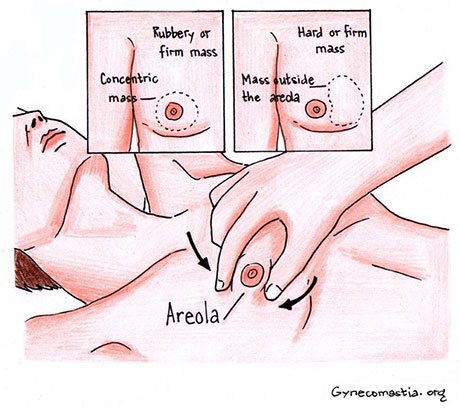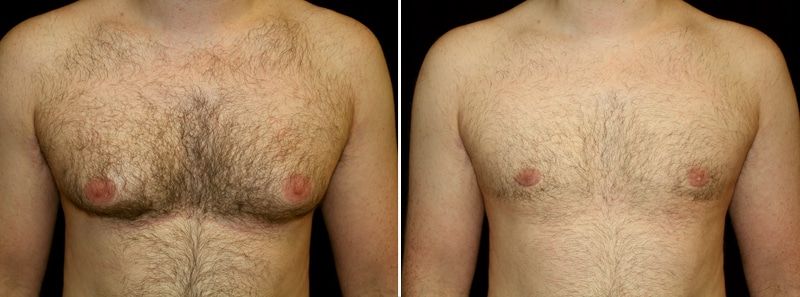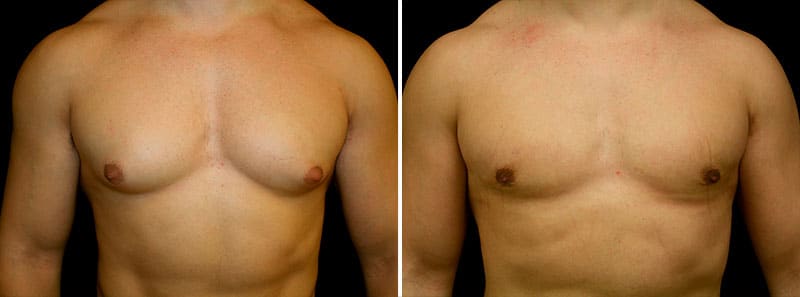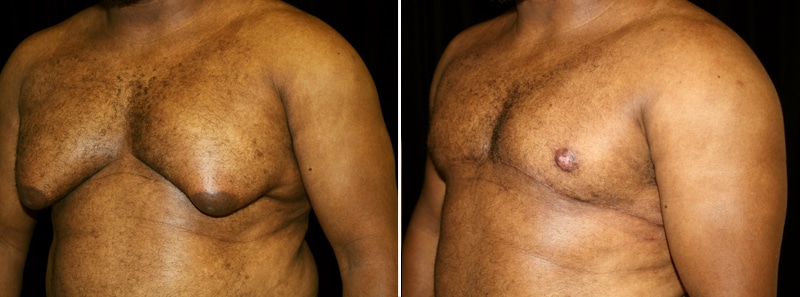Contact Us
 Dr. Delgado is a highly skilled surgeon specializing in gynecomastia surgery. Dr. Delgado has committed a significant amount of his practice to the care and education of men and boys with gynecomastia. Dr. Delgado’s practice philosophy is to provide the highest quality of patient care to the people who seek out his professional services. Dr. Delgado and his staff are committed to understanding their patients' concerns, educating them on their options, and executing the best surgical outcome for each patient. Dr. Delgado is the new owner of Gynecomastia.org since 2010. He has dedicated a significant part of his life and practice to improving the Gynecomastia.org community.
Dr. Delgado is a highly skilled surgeon specializing in gynecomastia surgery. Dr. Delgado has committed a significant amount of his practice to the care and education of men and boys with gynecomastia. Dr. Delgado’s practice philosophy is to provide the highest quality of patient care to the people who seek out his professional services. Dr. Delgado and his staff are committed to understanding their patients' concerns, educating them on their options, and executing the best surgical outcome for each patient. Dr. Delgado is the new owner of Gynecomastia.org since 2010. He has dedicated a significant part of his life and practice to improving the Gynecomastia.org community.

Gynecomastia is also known as “man boobs.” This disorder results in the development of excess breast tissue in one or both breasts. However, not all cases of gynecomastia are a result of a breast disorder. In some cases, man boobs can simply be a result of being overweight.
The gynecomastia pinch test can reveal if you have true gynecomastia or pseudogynecomastia. This initial diagnosis helps decide the best option to reduce enlarged male breasts.
What Is Gynecomastia?
The term gynecomastia refers to a condition that occurs when male breast tissue becomes enlarged, usually due to a hormonal imbalance. This imbalance happens when testosterone levels decrease and estrogen levels increase. Factors that can cause this hormonal imbalance include:
- Certain medical conditions
- Prescription medications
- Age
- Genetics
- Massive weight loss
- Drug use
- Anabolic steroids abuse
Gynecomastia symptoms can be one-sided or affect both sides of the male chest. As several factors can cause enlarged breast tissue, a gynecomastia pinch test is not the same as diagnosing the specific cause of the condition, which is often unknown.

The Gynecomastia Pinch Test: Gynecomastia Diagnosis
If you are experiencing male breast enlargement with other symptoms, it is wise to see an experienced gynecomastia doctor for an accurate diagnosis. Diagnosing gynecomastia will require a review of your medical history. The doctor will examine if the symptoms could be caused by physiologic factors or are drug-induced gynecomastia symptoms. This could be prescription drugs or illicit drugs, primarily anabolic steroids.
A physical exam and a gynecomastia pinch test are conducted to determine whether the condition is true gynecomastia or pseudogynecomastia. During the pinch test, you will be asked to lie down on your back. The doctor will then use his forefinger and thumb to examine the breast tissue. If there is a rubbery or firm mass of disk-shaped tissue beneath the nipple, the condition is true gynecomastia. If no such tissue exists, a gynecomastia pinch test can determine that the diagnosis is pseudogynecomastia.
Additional tests to diagnose gynecomastia and help determine any underlying causes may include:
- A mammogram to obtain a radiologic picture of the breast tissue
- Endocrine hormone tests to assess hormone levels
- Blood tests to evaluate kidney, liver, and thyroid function
Gynecomastia Symptoms
Gynecomastia can occur in adolescents and adults with varying severity, which the American Society of Plastic Surgeons categorizes into four gynecomastia grades.
Common symptoms of gynecomastia include:
- Painful or swollen breasts
- Breast tenderness
- The appearance of movable tissue beneath the nipple
- A bloody discharge from the nipple (rare)
- Secretion of fluid similar to breast milk (rare)
- Itchiness in the nipple and underarm
- Mood swings and changes in sex drive
When there are no symptoms aside from swelling and enlarged male breast tissue, this usually indicates pseudogynecomastia, which is diagnosed with a gynecomastia pinch test that reveals only excess fat, not glandular tissue.
The Four Grades of Gynecomastia
Grade 1 — breast enlargement is minor and not very noticeable. There is slight swelling but no presence of excess skin.
Grade 2 — enlargement of the breast is moderate and often unnoticeable when wearing loose clothing. There is no presence of excess skin.
Grade 3 — breast enlargement is moderate to severe and noticeable. The swelling may become severe, and excess skin is present, causing a breast crease.
Grade 4 — breast enlargement is significant and severe. Substantial excess skin gives a feminine breast appearance, with a significant sag and breast crease.

How Is Gynecomastia Treated?
The best treatment for gynecomastia and the only recognized permanent solution is gynecomastia surgery. When male breast reduction surgery is performed, the breast tissue will not return in the future. Depending on the severity of the enlarged breasts, the technique of male breast reduction surgery will vary:
- Breast gland excision with liposuction is the standard procedure, suitable for grades 1 and 2 gynecomastia. This technique is widely regarded as the most successful way of achieving male breast reduction. The surgery involves an excision around the edge of the areola to remove breast glandular tissue and liposuction to remove fat and contour the area to achieve a masculine-looking chest.
- For grade 3 gynecomastia symptoms, a two-stage procedure is often required. The first stage is described above, and the second stage is called a periareolar lift, which is typically done four to six months after the first procedure. This allows the blood supply to re-establish on the nipple-areola complex, reducing the risk of complications. In this second procedure, skin reduction is performed by making an incision around the edge of the areola. This is followed by a second larger incision, which makes the tissue between the incisions donut-shaped. Excess skin and tissue are removed, and the incisions are sutured closed.

-
A double incision mastectomy is a procedure recommended for some grade 3 and all grade 4 gynecomastia symptoms. The procedure starts with the removal of the nipple and areola complex. The next stage is an incision that extends from the breast fold to the armpit, although it may be larger, depending on the degree of redundant tissue and excess skin. Once the tissue has been removed, the table is raised to put the patient into a sitting position to see the effects of gravity on the chest. This helps determine how much skin needs to be removed to create a tight and contoured chest. The nipple-areola complex position is also reviewed before being reattached to ensure it is well-balanced and aesthetically correct.
Tips for Choosing a Plastic Surgeon
Many different types of surgeons perform gynecomastia surgery. To increase the likelihood of successful gynecomastia surgery, check that your surgeon is a board-certified plastic surgeon specializing in treating gynecomastia.
For personalized information about gynecomastia plastic surgery procedures, please complete Dr. Delgado’s inquiry form.
Miguel Delgado, M.D., F.A.C.S is a world-renowned Board-Certified Plastic Surgeon granted by the American Board of Plastic and Reconstructive Surgery and a member of the American Society of Plastic Surgery and Aesthetic Society. Dr. Delgado has a surgical practice solely dedicated to cosmetic plastic surgery. He specializes in gynecomastia surgery and is the medical director of Gynecomastia.org, the oldest and largest gynecomastia forum dedicated to supporting, educating, and providing solutions for men with breast enlargement. Dr. Delgado celebrates 30 years of practice in San Francisco, California. He was voted the “Best Plastic Surgeon of 2017-2021”.
Gynecomastia.org does not provide medical advice, treatment, or diagnosis.
©Copyright 2020 Gynecomastia.org. All rights reserved. Use and access to this site are subject to the terms and conditions as set out in our Legal Statement and Privacy Statement.
The content on Gynecomastia.org is for educational purposes only. It is not intended as medical advice. It does not replace the need to meet with a physician who will accurately diagnose your condition and suggest treatment options.

